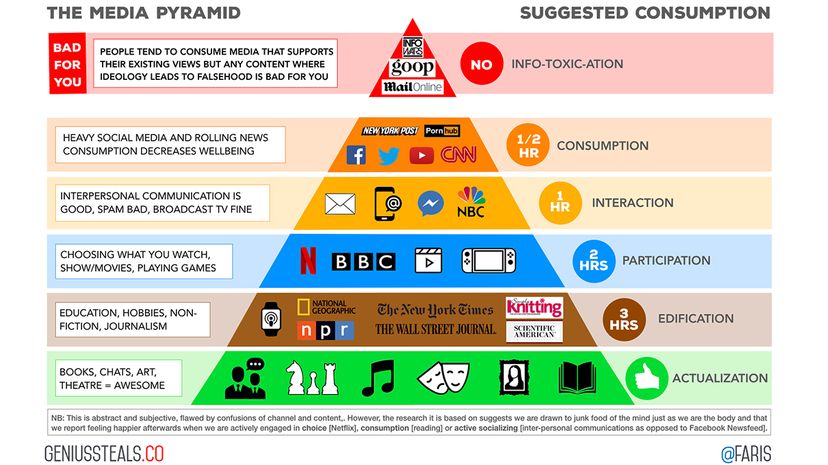In 2017, the average American spent more than 12 hours a day with various media, from TV to smartphones to laptops to newspapers (remember them?), right down the line. But is consuming too much media like eating too many french fries — bad for your health?
All sorts of research seems to say yes, and points to dangers from too much screen time for kids, too much access to porn, and too much TV can mean too much unhealthy eating. We might want to just chill once in a while. Read a book. Go for a leisurely stroll around a museum. Take part in a bit of quiet, thoughtful one-on-one conversation.
Getting a handle on our media addiction is the goal of the media pyramid, a concept from Faris Yakob, that 39-year-old London-born digital communications strategist we mentioned earlier. He also is founder, along with wife Rosie Yakob, of the consulting firm Genius Steals. The Yakobs, based in Nashville, Tennessee, crisscross the globe working with companies on improving their branding through social channels, unique advertising concepts ... all sorts of media.
Faris rolled out the first version of his pyramid on Medium in a post titled, "You are The Media You Eat."
"We don't understand abundance well," Faris says. "Clay Shirky [an NYU professor and writer who has written extensively on the internet and social media] said 'Abundance breaks more things than scarcity.' We tend to, in lots of studies, eat more and less well when we're exposed to larger amounts of food, and larger portions, and larger varieties."
The problem with both food and media is not simply a matter of scale, though. The problem is that many of us flip those pyramids upside down and gorge on that bad-for-you stuff at the top.
"We tend to eat the easiest most sugar-salty-fatty things, if given the sort of non-conscious choice," Faris says.
Junk food. Junk media.
